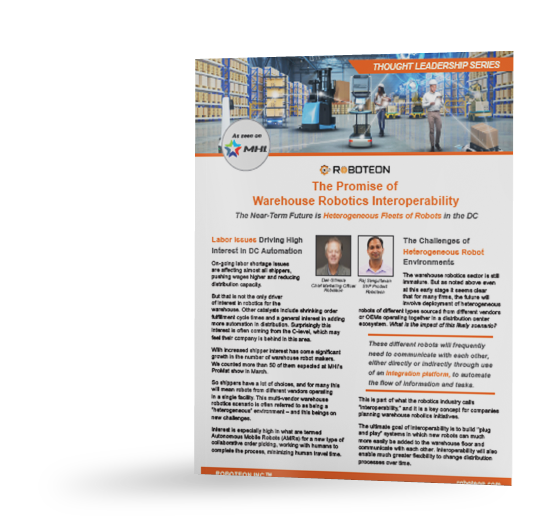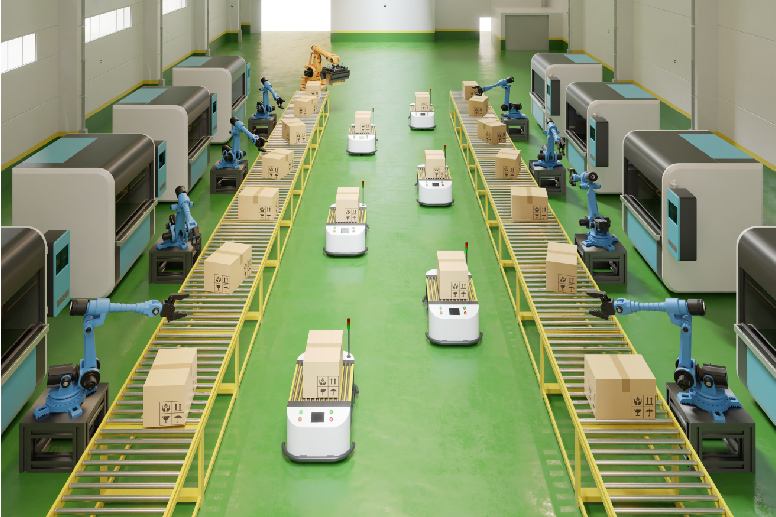Maximize Hardware Flexibility and Avoid Vendor Lock-In
A critical capability delivered by the Robotics Order Fulfillment Platform is robot interoperability.
At its core, interoperability involves different types of robots across different vendors operating as if they were all from the same OEM. While there are some initiatives in the robotics sector to develop cross-vendor integration protocols that will make interoperability much easier – and often serve to separate the hardware and software decision - such standards as VDA5050 and Mass Robotics 2.0 are either not widely used or are still under development.

So, what to do in the meantime? Robot vendors typically offer APIs to enable integration to other software platforms. New AI-based API data mapping technology allows robotics and other warehouse automation systems to be plugged into the platform and thus connect with other hardware and software systems without the need for a major IT integration project.
An example of interoperability across robot types is the need to connect different automated processes, such as to a robot moving goods from receiving to reserve storage, where another robot is made aware of a new putaway task.
Download the Roboteon
Robotic Interoperability Executive Brief

Flexibility to Add New Robot Types/Vendors over Time
There is another important issue. Once the initial robot deployment has passed, a company may later be interested in robots of the same type but from a different vendor for any number of reasons (cost, features, etc.).
You obviously want to add your new preferred robots but keep your investment in the ones you already operate.
But integrating those new robots is one thing. It is another thing to have an engine that can manage robots across vendors in terms of visibility, task assignment, performance measurement and more. This allows companies to keep the robots they have as they add new ones, and seamless operating multiple robot systems as a single fleet.

That's what you get with the Roboteon platform.
Let's discuss your needs and opportunities for robot interoperability today.
Resources

Thought Leadership Series: The Promise of Warehouse Robotics Interoperability
DOWNLOAD REPORT
Understanding Warehouse Robotics Software - White Paper
DOWNLOAD REPORT
Roboteon Solution Overview
Watch Video